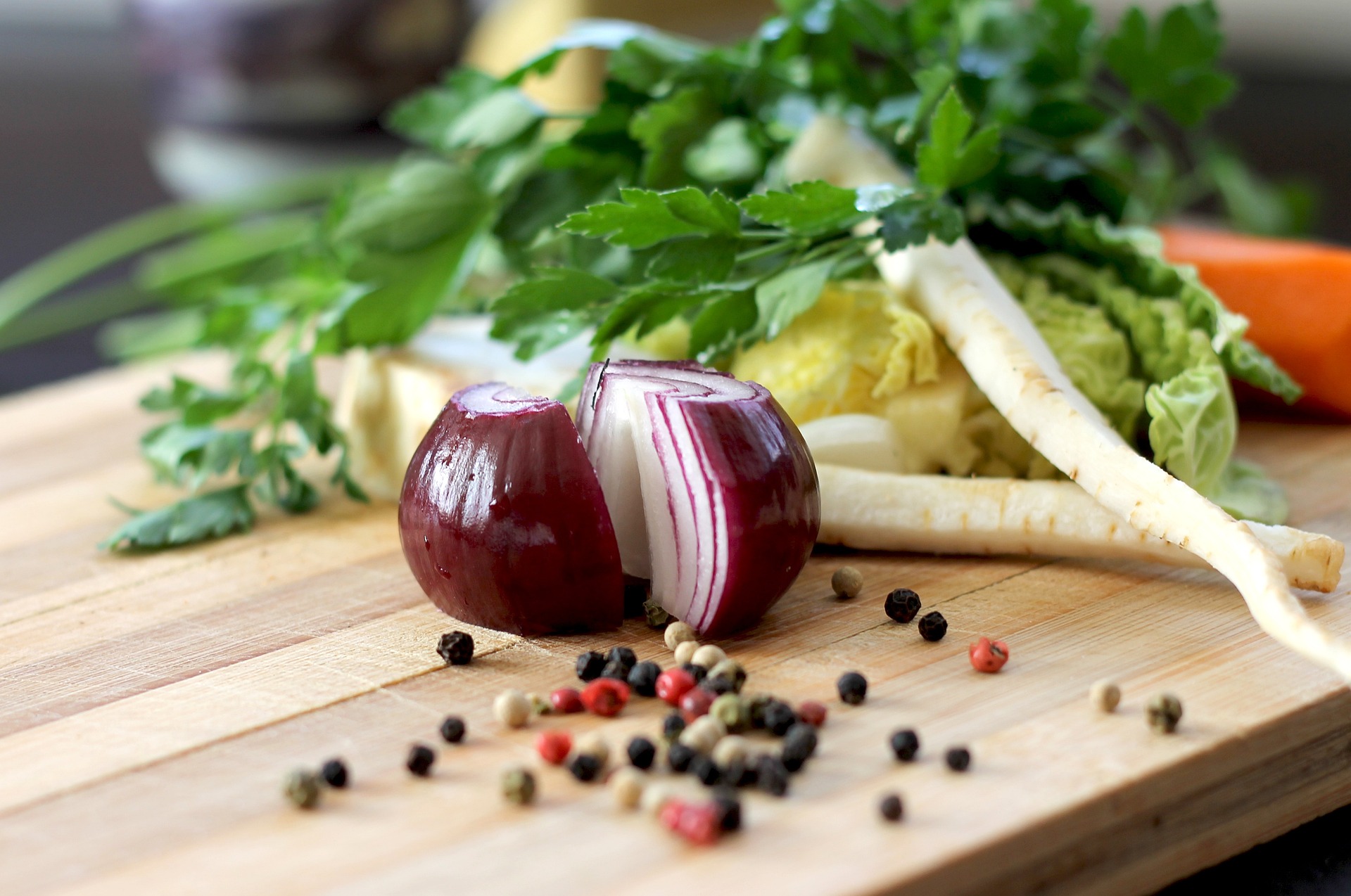The onion is important in humanity’s diet because it has been cultivated for at least 5,000 years. For the Egyptians, it symbolized eternal life because of its shape and onion rings. Therefore, it served as an offering to the gods and was given to the dead as travel provisions to the afterlife.
In the Roman Empire, the onion was one of the staple foods. The word onion originally comes from the Latin word “cepula,” which translates as “little head.” Cepula were Roman legionaries who brought the vegetable plant to Central Europe. From “cepula” developed “zwibolle” and finally, onion.
In the 15th century, the cultivation of different varieties of onion began.
The onion (Allium cepa) is rich in vitamin C and B6, and the minerals potassium, calcium, and magnesium contain antioxidant sulphur compounds. Another essential ingredient is fructans. These water-soluble oligo- and polysaccharides are only broken down in the large intestine by intestinal bacteria, forming natural gases. This explains the typical flatulence after eating, particularly a lot of onions.
In 2015, the onion was chosen as the medicinal plant of the year. Traditionally, fresh onions are used for coughs, colds or external insect bites. As a popular spice and vegetable plant, the onion is also used in the kitchen. Before that, however, the onions must be cut, which is one of the rather unpopular tasks.
By damaging the cell structure, the enzyme alliinase escapes inside the cell and splits the sulphur-containing amino acid alliin in the cell wall. This eventually produces the gas propanil S-oxide. This irritates the mucous membranes, and the first tears flow.
Tips for cutting onions
There are a few helpful tips to limit the itching and burn as well as the flow of tears. These include a sharp knife, as fewer onion cells are injured when cutting. Furthermore, it is beneficial to rinse all utensils, such as the onion, knife and board, with cold water before cutting. This creates a film of water on the surfaces that retain the irritant gas. Similarly, the onion can be placed in the refrigerator for 30 minutes. The cold decreases enzyme activity, so less of the irritant is produced. Another trick is to cut while sitting down. This way, the head is not held directly over the onion, and the rising gas does not irritate the eyes and nose as much.
Otherwise, there are no limits to your imagination. Fans and fume hoods or a wide open window can be helpful. Some use diving goggles, and with the help of contact lenses, cutting onions is said to be easier. All these tips can’t completely prevent the burning and the tears, but they make cutting onions more bearable.
On the one hand, the sulphur-containing ingredients of the onion are responsible for the irritation of the mucous membranes. On the other hand, they provide the typical, delicious onion flavour in various dishes.
This post has already been read 4143 times!



